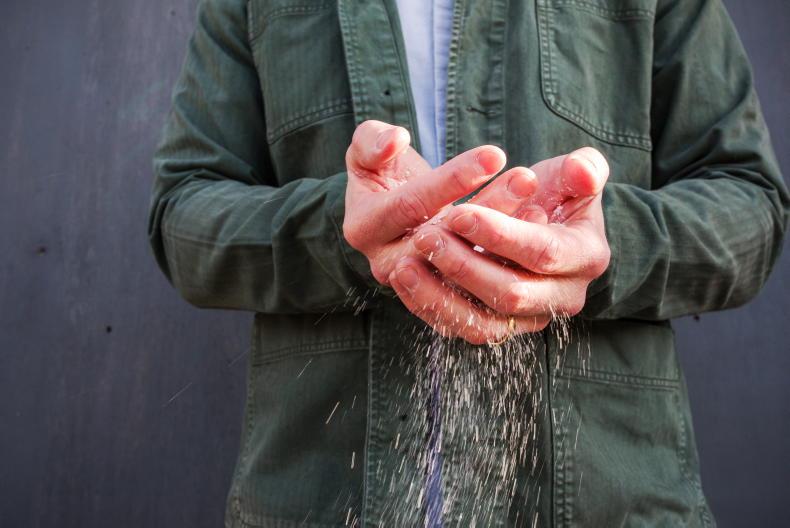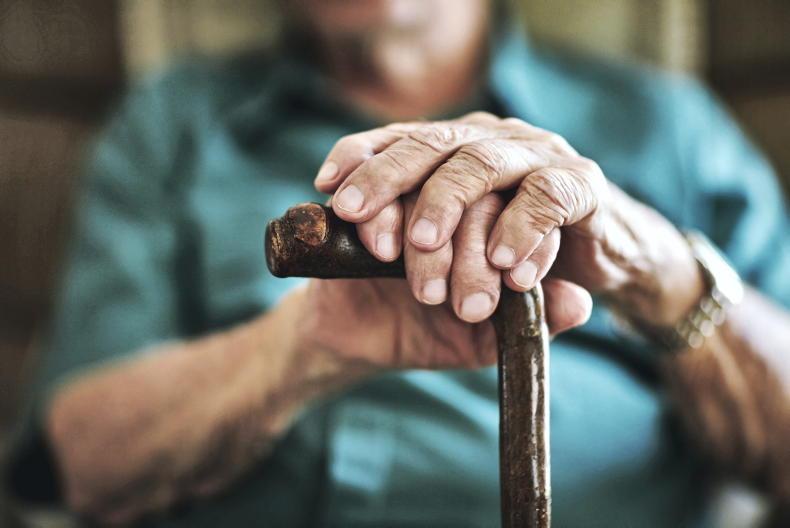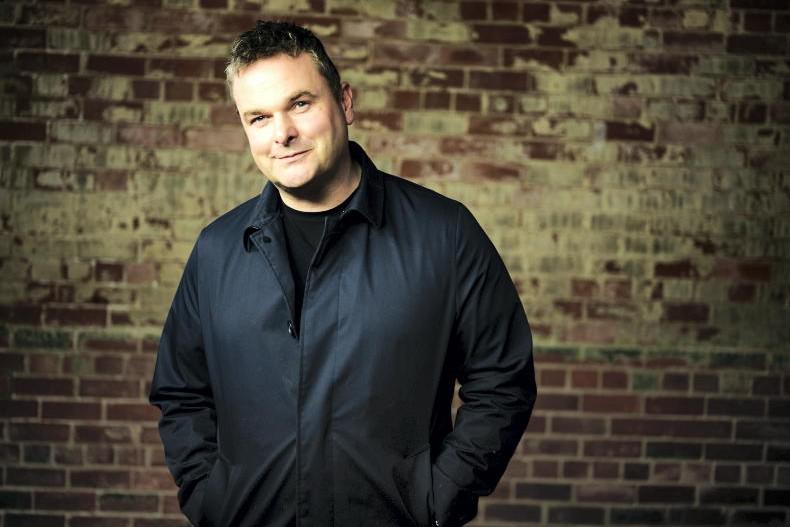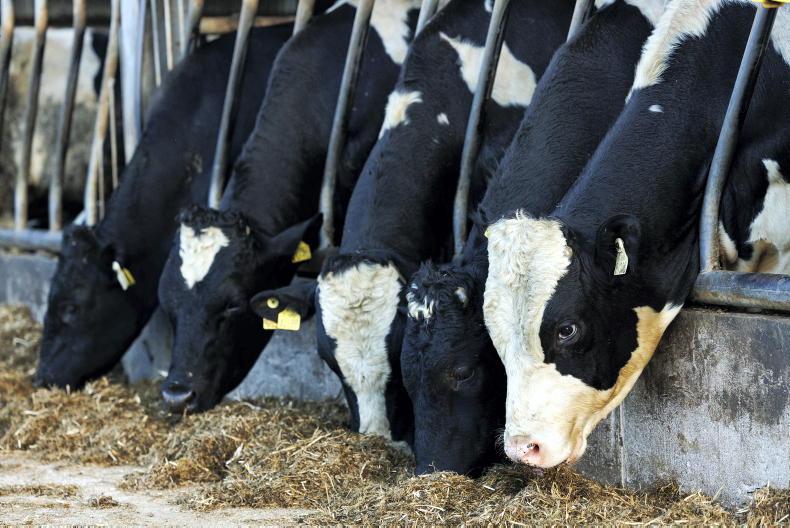In 2021, I challenged my colleagues at Irish Country Living to a 50km diet for one week. This meant sourcing all of our food within a 50km radius of our homes. As we were all living in different parts of the country, it was interesting to see which areas were best for home-grown ingredients and also what each of us would miss during the week.
Living in Co Tipperary, I was spoiled with excellent dairy, meat and local vegetables. I had honey, jams made from local fruits and even local ice cream at my fingertips. But I missed sugar. That's when my father-in-law said, “It’s a pity the sugar factory in Thurles isn’t still open, you’d be all set.” This incentivised me to learn more about Cómhlucht Siúicre Éireann and the highly politicised saga of the now-defunct Irish sugar industry.
Troubled history
Sugar was first extracted from sugarcane roughly 2,000 years ago, in India, before spreading throughout the known world (including parts of Europe) in the Middle Ages. It was taken to the “new world” in the 1600s where it became a plantation product – widely associated with the slave trade – in the West Indies and Brazil.
It was discovered that sugar could also be extracted from sugar beets in the late 1700s, though it was not a profitable enterprise until the Napoleonic wars, when much of Europe was cut off from sugar imports by blockades.
Once industrialised, European sugar began to rival sugarcane imports. In Ireland, the sugar industry was nationalised in the 1930s and four sugar processing facilities were established (in Tuam, Thurles, Mallow and Carlow). Once we joined the European
Economic Community in 1973, we were subject to European regulations.
For a plethora of reasons, but mainly due to our inability to compete with other European member states, our sugar industry declined rapidly starting in the 1980s, with our only remaining factory (Mallow) closing in 2007. This is the short version of a long and complex story (and there will be more on this in next week’s article).

Sugar is more than just a sweetener - it has a variety of gastronomic uses and is practically impossible to replace. \ Claire Nash
The thing about cane sugar
Despite how far the European sugar industry has come, sugarcane is still the dominant side of the global industry, totaling four fifths of the world’s sugar production. However, nearly all sugar in Europe now comes from European sugar beet.
This makes sense. After all, it is grown within the European Union. The sugar quota, first introduced in the 1968 Common Agricultural Policy (CAP), was abolished in 2017. While the restructuring of the sector, which began in 2006, basically meant the end of sugar production in Ireland, it also greatly effected cane sugar imports.
Is there an issue with that? The cane sugar industry was built on the backs of slaves and indentured labourers. There are accounts of human rights abuses and child labour in modern-day sugarcane production, alongside the environmental issues stemming from heavily developed monoculture sugar plantations (including burning, spraying and habitat loss in otherwise richly biodiverse regions).
However, most sugarcane-producing countries have a historic connection to Europe through colonisation and sugar is the largest industry in some of these countries. Like dairy and beef produced in Ireland, it is considered by some to be more environmentally efficient to produce sugar from sugarcane-growing countries than from sugar beets in colder climates – even with transport emissions included.

Julian Price is an experienced sugar trade analyst and the executive director of ACP/LDC Sugar Industries Group
ACP/LDC
Julian Price is an experienced sugar trade analyst and the executive director of ACP/LDC Sugar Industries Group. This group represents the 19 sugar-producing ACP (African, Caribbean, Pacific) and LDC (Least Developed Countries) countries at a European level.
He tells Irish Country Living that the main goal of this organisation is to tell the story of sugarcane production and what it means – socially and economically – to the countries producing it.
“Going back in history, the ACP sugar group was important – it had a commercial purpose – but the importance of the group has diminished with the liberalisation of the regime,” he says.
Similar to Ireland, sugar industries in countries like Jamaica, Guyana and Trinidad have either closed or have been greatly reduced since 2007. Meanwhile, most sugar-producing African countries are focusing less on selling to Europe and more within their own region.
“OK, so [some Caribbean nations] have crude oil, liquid natural gas and tourism, for example – but just as in Carlow and Mallow, the loss of good rural jobs in sugar and ancillary services has not been replaced,” Julian says.
Many within the EU feel we shouldn’t trade with ACP/LDC countries due to the agro-chemicals they often use on sugarcane, but could it be the case that our westernised view of ‘how things should be’ doesn’t always match the realities of living and working in a developing country?
“Sugarcane is a tropical plant, and so different agro-chemicals are used for plant protection compared with products used for a temperate crop like sugar beet – it’s a case that one rule cannot fit all circumstances.” Julian says.
Sugar in Irish gastronomy
Like me with my 50km diet, chef Jordan Bailey also finds the lack of Irish sugar frustrating. Born in Cornwall, he first moved to Ireland in 2018 to open Aimsir, a high-end restaurant at the Cliff at Lyons in Co Kildare which emphasised hyper-local Irish ingredients. Prior to this, Jordan had been living in Norway with his wife, Majken Bech-Bailey, who is originally from Denmark. The couple opened Aimsir to immediate acclaim and within its first year of existence, the restaurant was awarded two Michelin Stars.
The pair announced they were leaving Aimsir in 2023, but have stayed in Co Kildare, where they are currently working on new projects. Jordan says sugar was one of the very few items they couldn’t source locally at Aimsir.
“Before we opened, we spent months on the road sourcing suppliers, producers, fishers and craftspeople,” he recalls. “I had a list of all the things I’d like to source locally, and sugar was one of them. It was very early into the process when the conversation came up with a farmer. I explained I wanted to source Irish sugar and the farmer said, ‘It’s not possible; the industry doesn’t exist in Ireland anymore.’
“Sugar itself is very hard to replace; it has so many unique properties,” Jordan says. “People might say, ‘Why don’t you just use honey?’ But it’s not the same. You can’t directly swap it out.
“We were very open about it,” he adds, “when guests would sit down, we would say, ‘We source everything from within Ireland – apart from sugar.’ In the beginning we tried to avoid using it. Then, we tried to make our own sugar, which was disastrous.
“Obviously there’s huge technique and research involved; it’s a science and it’s not just about making it – it’s about how much work it takes to get even the tiniest amount.”
Why go to such extremes? To a chef like Jordan, what is local is also unique – a true “taste of place”. When Irish sugar was lost, we lost the ability to showcase our unique terroir through sugar, which once came from the same landscape that makes our dairy, meat and spirits so special. Sugar is more than a sweetener; it goes into pickling liquids, it balances sauces, creates syrups and acts as a preservative besides going into our cakes, biscuits and desserts.
“For us it was the whole philosophy the restaurant was built on,” Jordan says. “We obviously took things to the absolute extreme in trying to keep things as local as possible. It threw a lot of [perceived] limitations at us, but it made us be creative and come up with original ideas. That’s why we went to the extent that we did, and there’s something wonderful about putting your money back into your community.”

Chef Jordan Bailey and his wife Maijken. \ Claire Nash
Fairtrade Ireland
If you are concerned about the plight of sugar farmers in developing countries, it might be worth looking into Fairtrade sugar (and companies who use Fairtrade sugar in their products). The sugar you buy at the supermarket is European in origin, but your chocolates, pre-made cakes, biscuits and other ready-made desserts may use sugars of varying origins.
Executive director of Fairtrade Ireland, Peter Gaynor, says small-scale farmers in developing countries need to be organised if they want to increase their profitability and lessen their reliance on the larger players within the sugar industry.
“Farming is a rough business for millions of farmers the world over, and cane sugar is no exception. Fairtrade focuses on smaller farmers,” he explains. “It all depends on the volume of their production they are able to sell on Fairtrade terms.”
While normally Fairtrade has a minimum price which rises with the market, it is not so for Fairtrade sugar or roses.
“[Instead], we have a guaranteed premium which varies for different products,” says Peter. “Because of complex selling mechanisms for roses and sugar, we don’t have minimum prices but instead pay a premium of 10% for roses and €60 per tonne for sugar [or €80 per tonne for organic Fairtrade sugar].
“Whether we like it or not, sugar is being used in all kinds of products we consume – from chocolate to pizzas – so it might as well provide better for cane sugar farmers than the commodity market does. We need a Global Green Deal for farmers and the climate. We’ll be advocating for better supports for farmers at the EU elections in June.”
If you’re interested in learning more about the Fairtrade movement, Fairtrade Fortnight will take place from 4-17 March. For more information, or how to get involved: fairtrade.ie. Next week: we speak with a former sugar beet grower and ask the question: is there any hope for a future in Irish sugar?
Read more
Investigating your food: who grew your Easter egg?
Investigating your food: Is there any escaping palm oil?
In 2021, I challenged my colleagues at Irish Country Living to a 50km diet for one week. This meant sourcing all of our food within a 50km radius of our homes. As we were all living in different parts of the country, it was interesting to see which areas were best for home-grown ingredients and also what each of us would miss during the week.
Living in Co Tipperary, I was spoiled with excellent dairy, meat and local vegetables. I had honey, jams made from local fruits and even local ice cream at my fingertips. But I missed sugar. That's when my father-in-law said, “It’s a pity the sugar factory in Thurles isn’t still open, you’d be all set.” This incentivised me to learn more about Cómhlucht Siúicre Éireann and the highly politicised saga of the now-defunct Irish sugar industry.
Troubled history
Sugar was first extracted from sugarcane roughly 2,000 years ago, in India, before spreading throughout the known world (including parts of Europe) in the Middle Ages. It was taken to the “new world” in the 1600s where it became a plantation product – widely associated with the slave trade – in the West Indies and Brazil.
It was discovered that sugar could also be extracted from sugar beets in the late 1700s, though it was not a profitable enterprise until the Napoleonic wars, when much of Europe was cut off from sugar imports by blockades.
Once industrialised, European sugar began to rival sugarcane imports. In Ireland, the sugar industry was nationalised in the 1930s and four sugar processing facilities were established (in Tuam, Thurles, Mallow and Carlow). Once we joined the European
Economic Community in 1973, we were subject to European regulations.
For a plethora of reasons, but mainly due to our inability to compete with other European member states, our sugar industry declined rapidly starting in the 1980s, with our only remaining factory (Mallow) closing in 2007. This is the short version of a long and complex story (and there will be more on this in next week’s article).

Sugar is more than just a sweetener - it has a variety of gastronomic uses and is practically impossible to replace. \ Claire Nash
The thing about cane sugar
Despite how far the European sugar industry has come, sugarcane is still the dominant side of the global industry, totaling four fifths of the world’s sugar production. However, nearly all sugar in Europe now comes from European sugar beet.
This makes sense. After all, it is grown within the European Union. The sugar quota, first introduced in the 1968 Common Agricultural Policy (CAP), was abolished in 2017. While the restructuring of the sector, which began in 2006, basically meant the end of sugar production in Ireland, it also greatly effected cane sugar imports.
Is there an issue with that? The cane sugar industry was built on the backs of slaves and indentured labourers. There are accounts of human rights abuses and child labour in modern-day sugarcane production, alongside the environmental issues stemming from heavily developed monoculture sugar plantations (including burning, spraying and habitat loss in otherwise richly biodiverse regions).
However, most sugarcane-producing countries have a historic connection to Europe through colonisation and sugar is the largest industry in some of these countries. Like dairy and beef produced in Ireland, it is considered by some to be more environmentally efficient to produce sugar from sugarcane-growing countries than from sugar beets in colder climates – even with transport emissions included.

Julian Price is an experienced sugar trade analyst and the executive director of ACP/LDC Sugar Industries Group
ACP/LDC
Julian Price is an experienced sugar trade analyst and the executive director of ACP/LDC Sugar Industries Group. This group represents the 19 sugar-producing ACP (African, Caribbean, Pacific) and LDC (Least Developed Countries) countries at a European level.
He tells Irish Country Living that the main goal of this organisation is to tell the story of sugarcane production and what it means – socially and economically – to the countries producing it.
“Going back in history, the ACP sugar group was important – it had a commercial purpose – but the importance of the group has diminished with the liberalisation of the regime,” he says.
Similar to Ireland, sugar industries in countries like Jamaica, Guyana and Trinidad have either closed or have been greatly reduced since 2007. Meanwhile, most sugar-producing African countries are focusing less on selling to Europe and more within their own region.
“OK, so [some Caribbean nations] have crude oil, liquid natural gas and tourism, for example – but just as in Carlow and Mallow, the loss of good rural jobs in sugar and ancillary services has not been replaced,” Julian says.
Many within the EU feel we shouldn’t trade with ACP/LDC countries due to the agro-chemicals they often use on sugarcane, but could it be the case that our westernised view of ‘how things should be’ doesn’t always match the realities of living and working in a developing country?
“Sugarcane is a tropical plant, and so different agro-chemicals are used for plant protection compared with products used for a temperate crop like sugar beet – it’s a case that one rule cannot fit all circumstances.” Julian says.
Sugar in Irish gastronomy
Like me with my 50km diet, chef Jordan Bailey also finds the lack of Irish sugar frustrating. Born in Cornwall, he first moved to Ireland in 2018 to open Aimsir, a high-end restaurant at the Cliff at Lyons in Co Kildare which emphasised hyper-local Irish ingredients. Prior to this, Jordan had been living in Norway with his wife, Majken Bech-Bailey, who is originally from Denmark. The couple opened Aimsir to immediate acclaim and within its first year of existence, the restaurant was awarded two Michelin Stars.
The pair announced they were leaving Aimsir in 2023, but have stayed in Co Kildare, where they are currently working on new projects. Jordan says sugar was one of the very few items they couldn’t source locally at Aimsir.
“Before we opened, we spent months on the road sourcing suppliers, producers, fishers and craftspeople,” he recalls. “I had a list of all the things I’d like to source locally, and sugar was one of them. It was very early into the process when the conversation came up with a farmer. I explained I wanted to source Irish sugar and the farmer said, ‘It’s not possible; the industry doesn’t exist in Ireland anymore.’
“Sugar itself is very hard to replace; it has so many unique properties,” Jordan says. “People might say, ‘Why don’t you just use honey?’ But it’s not the same. You can’t directly swap it out.
“We were very open about it,” he adds, “when guests would sit down, we would say, ‘We source everything from within Ireland – apart from sugar.’ In the beginning we tried to avoid using it. Then, we tried to make our own sugar, which was disastrous.
“Obviously there’s huge technique and research involved; it’s a science and it’s not just about making it – it’s about how much work it takes to get even the tiniest amount.”
Why go to such extremes? To a chef like Jordan, what is local is also unique – a true “taste of place”. When Irish sugar was lost, we lost the ability to showcase our unique terroir through sugar, which once came from the same landscape that makes our dairy, meat and spirits so special. Sugar is more than a sweetener; it goes into pickling liquids, it balances sauces, creates syrups and acts as a preservative besides going into our cakes, biscuits and desserts.
“For us it was the whole philosophy the restaurant was built on,” Jordan says. “We obviously took things to the absolute extreme in trying to keep things as local as possible. It threw a lot of [perceived] limitations at us, but it made us be creative and come up with original ideas. That’s why we went to the extent that we did, and there’s something wonderful about putting your money back into your community.”

Chef Jordan Bailey and his wife Maijken. \ Claire Nash
Fairtrade Ireland
If you are concerned about the plight of sugar farmers in developing countries, it might be worth looking into Fairtrade sugar (and companies who use Fairtrade sugar in their products). The sugar you buy at the supermarket is European in origin, but your chocolates, pre-made cakes, biscuits and other ready-made desserts may use sugars of varying origins.
Executive director of Fairtrade Ireland, Peter Gaynor, says small-scale farmers in developing countries need to be organised if they want to increase their profitability and lessen their reliance on the larger players within the sugar industry.
“Farming is a rough business for millions of farmers the world over, and cane sugar is no exception. Fairtrade focuses on smaller farmers,” he explains. “It all depends on the volume of their production they are able to sell on Fairtrade terms.”
While normally Fairtrade has a minimum price which rises with the market, it is not so for Fairtrade sugar or roses.
“[Instead], we have a guaranteed premium which varies for different products,” says Peter. “Because of complex selling mechanisms for roses and sugar, we don’t have minimum prices but instead pay a premium of 10% for roses and €60 per tonne for sugar [or €80 per tonne for organic Fairtrade sugar].
“Whether we like it or not, sugar is being used in all kinds of products we consume – from chocolate to pizzas – so it might as well provide better for cane sugar farmers than the commodity market does. We need a Global Green Deal for farmers and the climate. We’ll be advocating for better supports for farmers at the EU elections in June.”
If you’re interested in learning more about the Fairtrade movement, Fairtrade Fortnight will take place from 4-17 March. For more information, or how to get involved: fairtrade.ie. Next week: we speak with a former sugar beet grower and ask the question: is there any hope for a future in Irish sugar?
Read more
Investigating your food: who grew your Easter egg?
Investigating your food: Is there any escaping palm oil?












SHARING OPTIONS